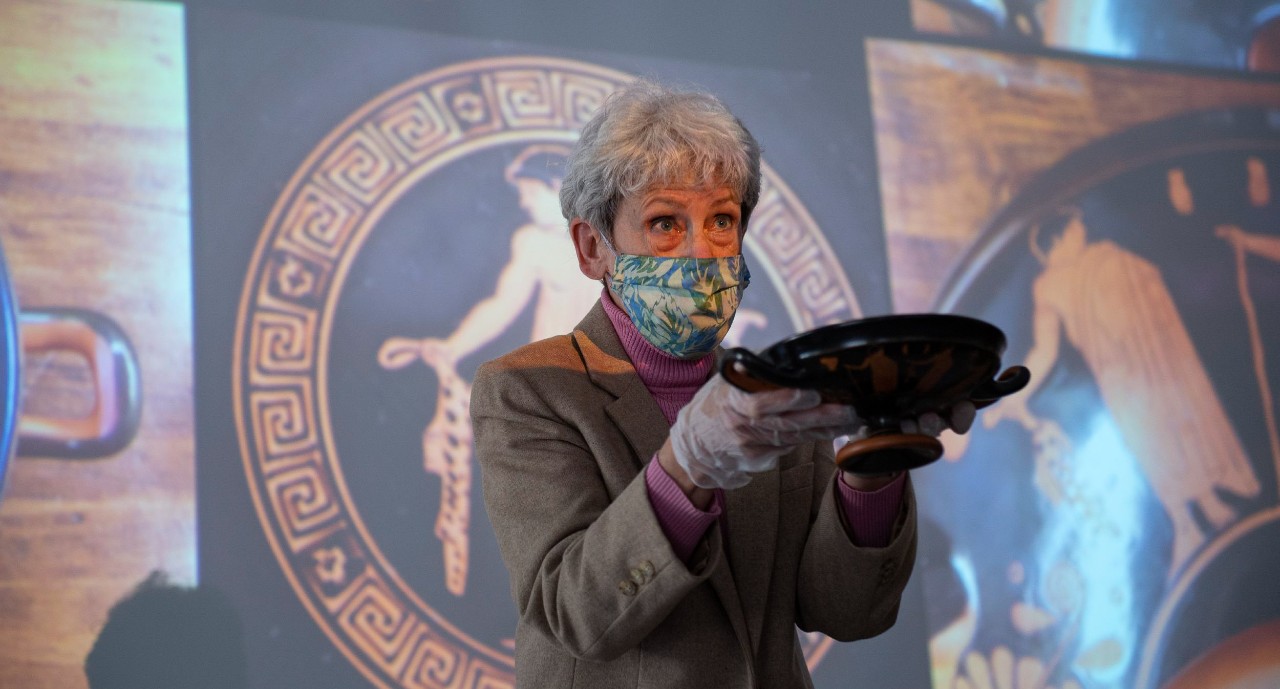
Hybrid class lets UC students experience ancient Greece
Classics students study UC's priceless artifacts to supplement online learning
Wearing latex gloves, University of Cincinnati student Salma Soliman gingerly picked up an ancient Greek cup that likely hasn’t held wine in more than 2,000 years.
Soliman enjoys the one day a week she comes to campus for professor Barbara Burrell’s course on Greek archaeology. Like many students these days, Soliman is spending most of her time attending remote classes because of the COVID-19 pandemic. But that one hands-on day is special.
“You can see artifacts at museums behind glass, but it’s not the same,” Soliman said. “Being able to hold them is kind of mind-blowing.”
While Burrell teaches most of the course online, on Fridays she invites students to Blegen Library for a chance to see, touch and hold artifacts from UC’s Classics Study collection.
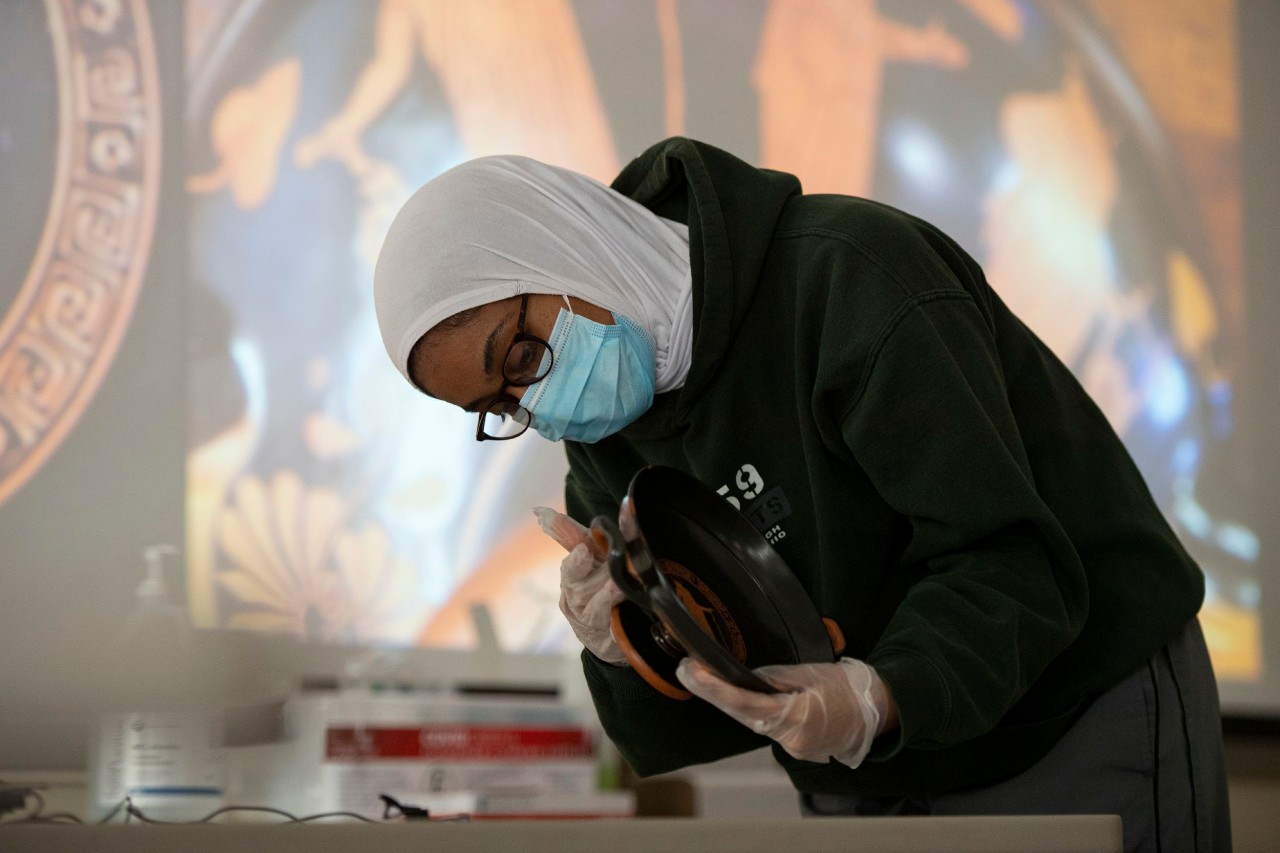
UC student Salma Soliman inspects an ancient clay cup in her Greek archaeology class. Photo/Colleen Kelley/UC Creative + Brand
UC has conducted nearly a century of groundbreaking archaeological research at world-famous sites such as Troy, Pylos, Kea and Pompeii.
“At the University of Cincinnati, we’re so archaeology strong. We encourage students to participate in field research and to get a background in ancient languages,” she said.
Burrell has pursued her love of archaeology since she was a first-year student at New York University and traveled to Mallorca, Spain, to work at an excavation. She was just 18.
The pandemic hasn’t just affected students. For professors, lecturing over the web is more challenging than being in a classroom, she said.
“It’s like teaching through a pane of dark glass,” she said. “You can’t get that eye-to-eye contact that makes you know students are getting it or they’re not getting it and I need to explain it differently.”
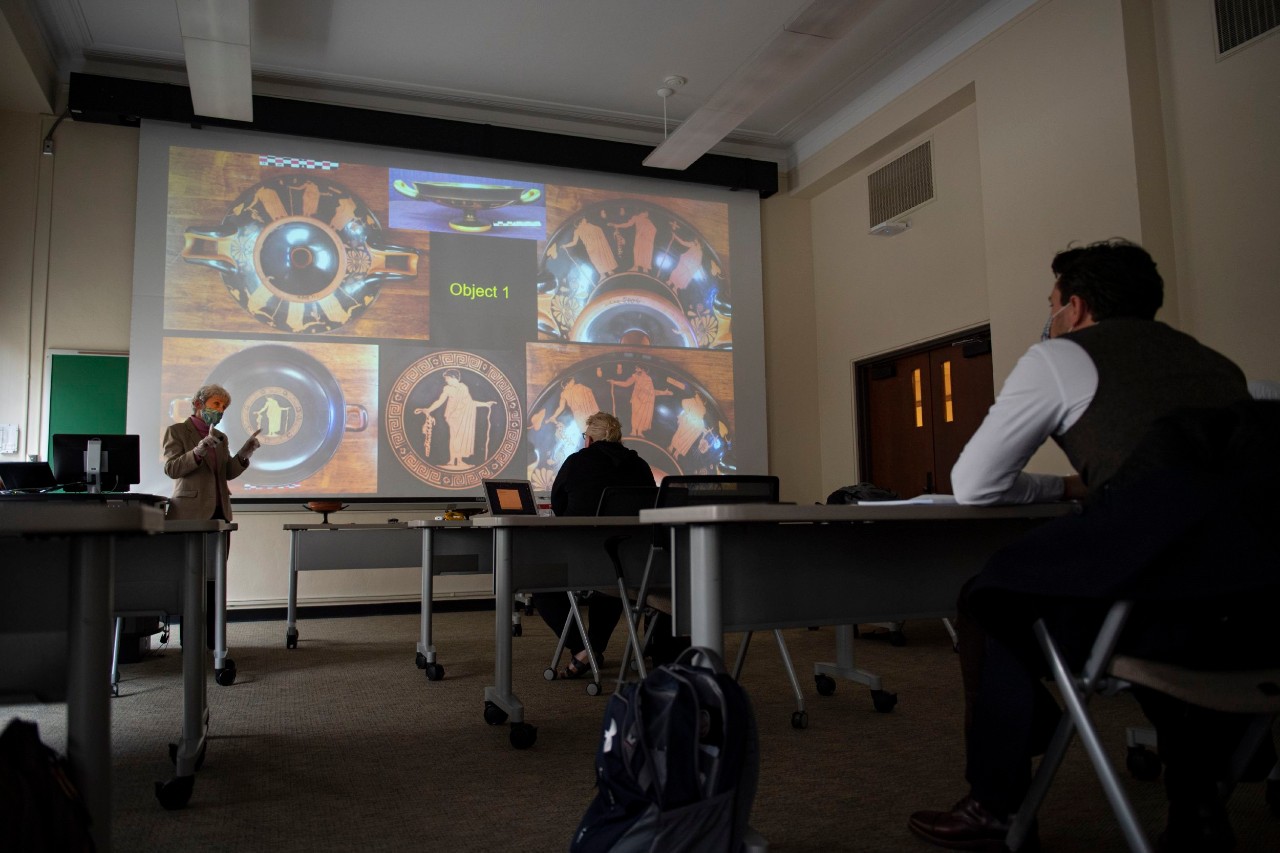
UC Classics professor Barbara Burrell gives an interactive lecture on ancient Greece using artifacts from UC's collection. Photo/Colleen Kelley/UC Creative + Brand
When UC allowed in-person instruction this fall, Burrell created a hybrid course in which students get web instruction but come to campus once a week to see artifacts from the ancient Greeks they’re studying.
Classics Department curator Carol Hershenson and teaching assistant Maura Brennan helped choose and supply artifacts from UC’s collection. Burrell was able to dedicate time to redesign the course through an Instructional Innovation Advisory Council award from the college.
Ironically, Burrell said, the changes she made to the syllabus in response to the pandemic improved the course.
“Ordinarily, you’d have to volunteer at a museum to handle these artifacts. It’s a rare opportunity,” Burrell said.
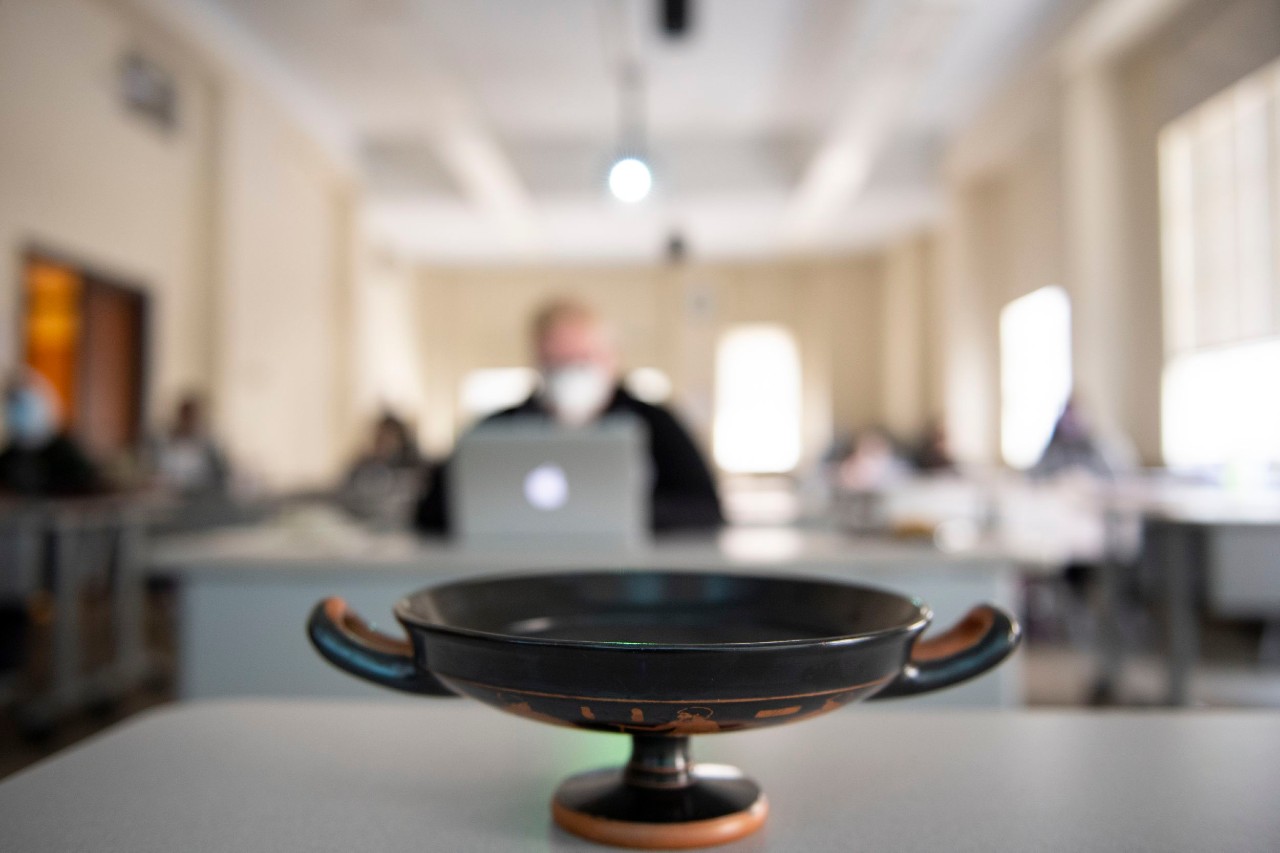
An ancient Greek cup sits on a table in a lecture room at Blegen Hall where Classics Professor Barbara Burrell teaches Greek archaeology. Photo/Colleen Kelley/UC Creative + Brand
Students wore face masks and sat at desks set comfortably apart in the larger than needed lecture hall. Burrell invited each student to the front of the room to study the day’s object and remark on anything they noticed about it.
Burrell takes high-resolution images of each object to share and talks regularly with students who choose to remain off campus during the pandemic.
Before taking her seat, student Soliman removed an alcohol wipe from her bag and cleaned her desk and chair. Other students wiped down their spaces with cleaning products before leaving for the day.
“I’m a very paranoid person. This is my only on-campus class. It’s better to be safe than sorry,” she said.
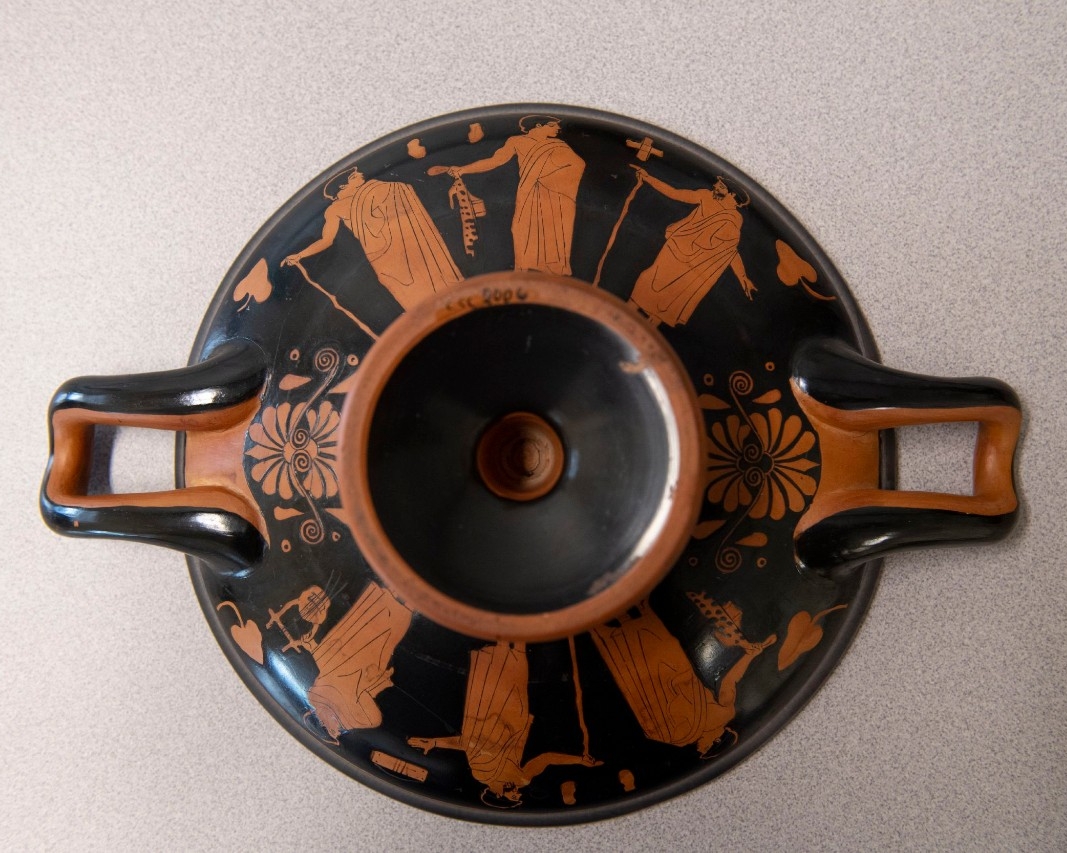
An artist more than 2,000 years ago in ancient Greece painted the bottom of this cup. Photo/Colleen Kelley/UC Creative + Brand
Soliman is a neuroscience major but is getting a certificate in Mediterranean archaeology.
“I’ve always had a fascination with ancient civilizations and ancient history. Both of my parents are Egyptian, so I’ve been drawn to other cultures,” she said. “After reading Rick Riordan’s ‘Percy Jackson’ series, I got more interested in it.”
When it was her turn, she handled the cup with care to respect its antiquity.
The clay cup is painted with six male figures on its outer surface with a seventh in the center of its broad serving bowl, which would probably hold at least a half bottle of wine. The students scrutinized the cup trying to decipher the story the artist was trying to convey in the scene.
On one side, an older, bearded man appears to address two younger men carrying a staff and an animal-skin carrying case for a flute. The opposite side is similar, but one young man cradles a stringed instrument called a lyre.
The cups were a big part of social life in ancient Greece, Burrell said. Groups of men would gather for a “symposium,” where they would talk, joke, enjoy music or even play drinking games such as “kottabos” where participants fling the dregs of their wine cup at a target.
UC fifth-year senior Christopher Keil interpreted the scene as a classic coming of age story. He saw the older figure offering two younger men advice about their future, either to be practical about the future or perhaps to follow their artistic dreams instead.
“That’s why the figure in the bottom of the cup holds one icon of each. He’s trying to figure out, ‘Do I pursue my music or do I take up a life of responsibility?’” Keil said.
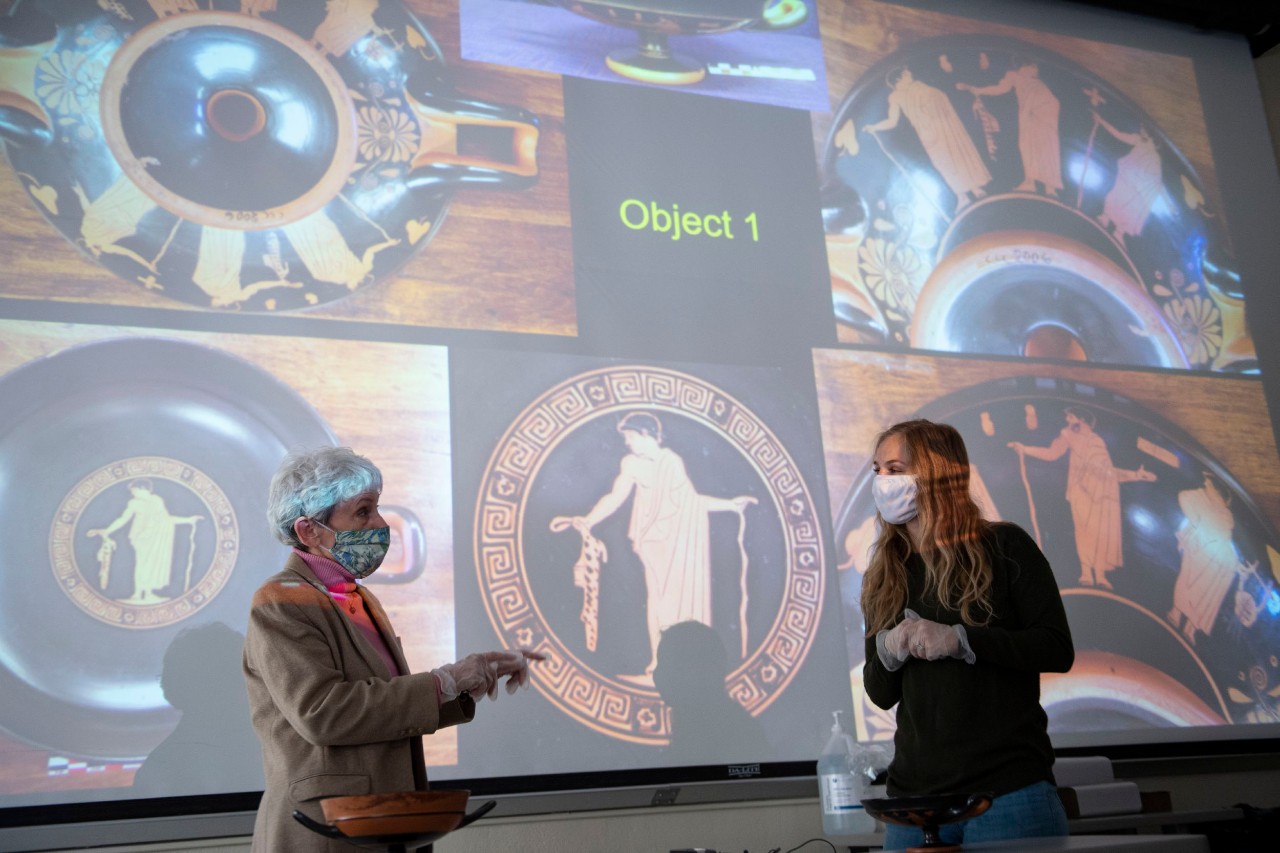
UC Classics professor Barbara Burrell, left, talks to UC student Lizzy Hallett about the significance of artwork depicted on an ancient Greek cup. Photo/Colleen Kelley/UC Creative + Brand
Lizzy Hallett is getting a second bachelor’s degree in classical civilizations. While holding the ancient cup, Hallett said she thought about the person who bought it millennia ago.
“You start to think maybe my life isn’t so different from people who lived back then,” she said. “You find those threads and it makes a pretty cool connection.”
Hallett said she appreciates the effort to make the class special for her and her classmates.
“For me personally, this is a dream come true to get a chance to hold these artifacts from thousands of years ago and from other civilizations,” she said. “I was so glad we didn’t miss out on this. Dr. Burrell has pushed to make this happen safely for everyone.”
Burrell plans to offer the course again next year if the pandemic allows.
Featured image at top: UC Classics professor has been studying ancient civilizations since she was a first-year student at New York University. Photo/Colleen Kelley/UC Creative + Brand
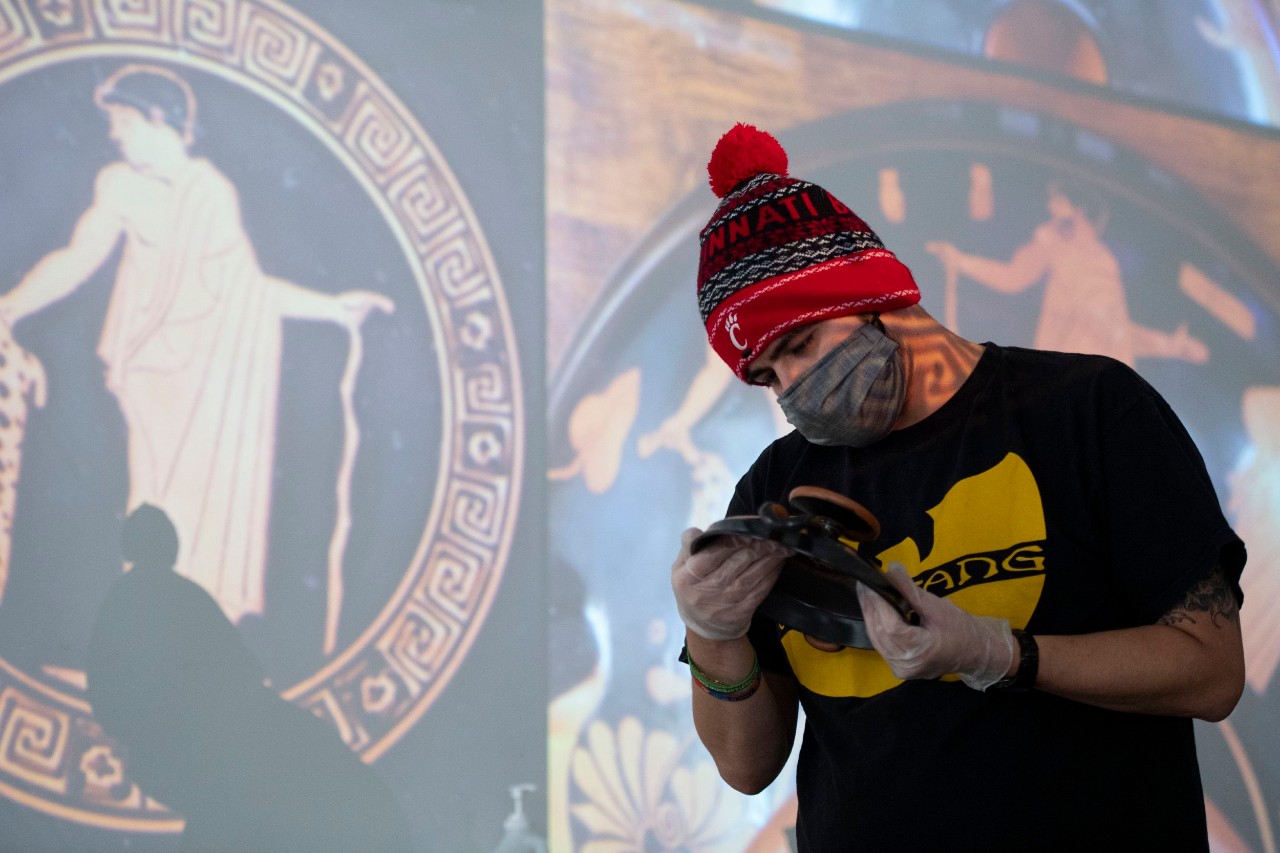
UC Classics student Andrew Rivadeneira inspects an ancient clay cup from Greece. Photo/Colleen Kelley/UC Creative + Brand
Impact Lives Here
The University of Cincinnati is leading public urban universities into a new era of innovation and impact. Our faculty, staff and students are saving lives, changing outcomes and bending the future in our city's direction. Next Lives Here.
Stay up on all UC's COVID-19 stories, read more #UCtheGood content, or take a UC virtual visit and begin picturing yourself at an institution that inspires incredible stories.
Related Stories
Working out worked out for UC student Emma Kalinowski
May 5, 2025
When Emma Kalinowski first arrived at UC, she went through a handful of major changes before her burgeoning love of fitness led her to the School of Human Service's Exercise Science program. Now a senior about to graduate and inspired by a recent internship experience, she's readying to start a master's program in the fall. The CECH student spoke with us about her time at UC and her plans for a career in pediatric exercise physiology.
UC celebrates record spring class of 2025
May 2, 2025
UC recognized a record spring class of 2025 at commencement at Fifth Third Arena.
Leveling up
May 2, 2025
Meet four College of Allied Health Sciences students who are advancing their education following graduation this May.
